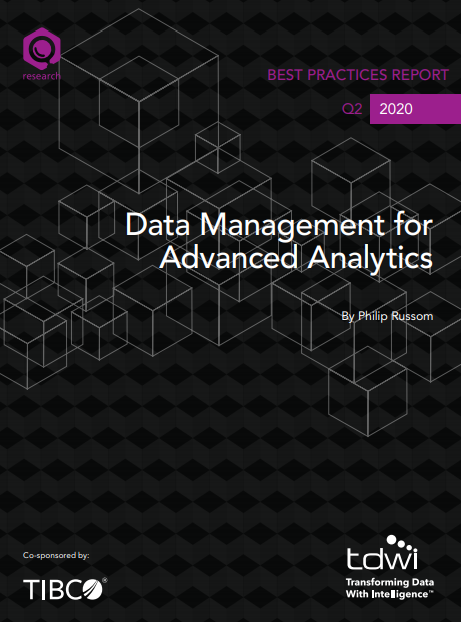We gathered the emerging thought leaders in data and analytics space to talk about the key issues facing the South African market.
Annie Symington, HOD: Analytics, Multichoice
Annie Symington is Head of Analytics for MultiChoice, a Naspers owned company in South Africa. Annie holds responsibility for data analytics and insights across the Consumer, Content, Retention and Sales business lines, aimed at driving improved organisation decisions and communications with the use of insightful data publications.
With almost a decade in the marketing industry (across telecoms and media organisations), she has strived to change the company view from the static normal, to the view of using all available data to better understand the customer and their specific behaviours.
Richard van der Wath, Chief Data Officer, MyBucks
I am a highly skilled individual with above-average problem solving and leadership skills. I have in-depth knowledge in the science of extracting knowledge from data as well as making predictions by building computer models and simulations of complex dynamic systems. I have worked in a wide area of fields from financials through microbiology to industrial processes, and I really excel at crossing domain boundaries and interacting with people from diverse backgrounds.
Danie Jordaan, Chief Data Officer, PSG
I am passionate about providing great service to clients. Service takes many forms in PSG, anything from assisting Advisers with Infrastructure to the more satisfying tasks of building innovative ways of enabling Advisers through technology.
I have a particular interest in CRM systems as it is a culmination of many different technology initiatives in order to enable business. CRM is not a nice-to-have anymore – it is a ticket to the game. Clients expect you to know them and service them as you agreed. But it is not only clients expecting this, it is regulations as well. And that is what CRM does great – if you apply it right, it turns regulations ( that seems cumbersome to many ) into opportunity.
I love spending time with Advisers. They make substantial differences in the lives of their clients, and I see it as a personal goal to assist and enable them.
In order to add value in PSG I have combined my technology background with financial planning training. Currently I am extending this by also studying MBA. This have put me in a unique position to understand technology and balance what is possible, with what is required by Advisers and the regulator.
Wicus du Preez, Head: Business Analytics, AIG
Data scientist with well-rounded expertise in advanced analytics, innovation, data strategy development as well as marketing optimization.
Strong strategic thinker with proven record of execution and driving bottom line results. Adept at building talent, leading teams and mobilizing cross-functional groups in multicultural settings. A proven business professional with strong analytical skills and demonstrated success globally in both management and functional leadership.
Specialities include:
Customer segmentation, Propensity modeling, Analytics & data strategy, Customer insight, Business intelligence, Automated reporting & visualization solutions, Business & marketing optimization and efficiencies.
Yudhvir Seetharam, Head of Analytics, FNB
I am responsible for the analytics department in the FNB Business segment. Our segment banks all types of businesses, from start-ups to JSE listed entities. My job enables me to think creatively, analytically and with a business oriented goal in mind. My team of 10 analysts ensures that we maintain the innovative edge over our competitors by effectively using Big Data to enhance FNB’s market position. I am a regular public speaker on topics of Big Data and Entrepreneurship.
Academically, I am reading towards my Ph.D in Behavioural Finance at the University of the Witwatersrand. I have also obtained my various RPE (Registered Person Exams) qualifications, enabling me to give financial advice. As a lecturer of investments and risk management, I am able to provide bridge the gap between theory and practice.
FNB Business Analytics (previously FNB Business Banking and FNB Commercial Banking) covers all MI and analytics that form and influence our customer’s lifecycle. The department of 10 analysts looks after reporting and analytics of several business areas, namely: Growth and Sales; Operations, Legal, Risk and Compliance; and Transactional behaviour.
My role involves the decision making, execution and management of this analytics space to ensure we meet our internal and external stakeholder needs.
Articulating insights to business in a way they understand and therefore use is a major challenge in the analytics profession. What initiatives are you using in your business to overcome these challenges and effectively narrate the story to business?
Danie Jordaan (DJ): This is a significant challenge. Traditionally PSG had a very flat structure so developers interacted with business directly. Documentation lacked however as the developers started developing “word-of-mouth” and made no documentation. We have appointed BA’s and PM’s to aleviate the problem. This caused improved paperwork, but for some reason there still seems to be a disconnect between what business wants and developers do. I believe the answer is not as simple as adding personnel to a problem. It is about adding the correct personnel who is willing and able, and keeping them in order not to lose corporate knowledge.
Annie Symington (AS): Keeping it simple and close to the customer is imperative. It’s import for business to understand what the customers are doing / preferring. We deliver our information using visually pleasing and simple graphics, slides etc. Our goal is to storyboard the information at all times.
Richard van der Wath (RW): We have a strong focus on data and algorithm visualisation via live dashboards and in reports. To achieve this, it is important to use the right tools as well as having experts with know-how about data visualisation and visual design.
Wicus du Preez (WP): Increased usage of visual representation tools, user selectable interactive reporting. Closer collaboration with business representatives, allows feedback in plain language.
Yudhvir Seetharam (YS): Analytics and data is now a c-suite initiative, being included as part of the strategy for enhancing all areas of interaction with the customer. Projects ranging from sales to risk and operations are being created to ensure that we leverage fully both internal and external data to enhance our customer’s banking experience. Further, in the drive to maintain market share, innovation in the area of “beyond banking” is also being investigated. We have also recently integrated the research function into analytics – providing an end to end value chain to our internal stakeholders.
How would you describe the relationship between the data owners in your business and the analytics owners? And what is your desired state for this relationship?
DJ: It should be symbiotic. Data owners need analytics for decision making purposes, so if they do not involve analytics in system changes they jeopardize their ability to make decisions from their own data.
AS: The relationship is acceptable to a certain extent. As the analytics owners within our business consume transformed information, once the data has been made available through the EDW (electronic data warehouse) environment, there is less involvement between the data owners and the analytics owners.
Ideally, it would be better for the team to be closer as this would assist in understanding the impact to the customer better (in terms of processes etc) or understanding why the data presents itself the way it does.
RW: A close working relationship between Data Science and Tech/IT is imperative in order to ensure and maintain data integrity as well as for deployment of models. The ideal relationship is where Tech can monitor and maintain data integrity and Data Science can just focus on analytics and model building.
WP: Separated, is a compromise but otherwise analytics resources are side tracked with DBA maintenance issues. Ideally data ownership should sit within IT, with separate analytics team that can prescribe data requirements.
YS: It differs per segment in the bank, but typically data and analytics are centralised to provide good communication between the two areas. Analysts need to have a basic understanding of both areas in order to enhance the offering of each respective department. Having these functions centralised in FNB Business allows both teams to work together instead of duplication of work in, say, obtaining data.
A close working relationship between Data Science and Tech/IT is imperative in order to ensure and maintain data integrity as well as for deployment of models. The ideal relationship is where Tech can monitor and maintain data integrity and Data Science can just focus on analytics and model building.
What is your approach to building use cases in your organisation – in both a data and analytics environment – to drive trust and investment in your work?
DJ: The developer and business needs to communicate very closely to ensure that the use case is exactly as the business require. It is of immense value if a BA or Head of analytics were in a Business role in the past for that specific company. It makes the translation of business and developer language much easier.
AS: Previously the analytics area was part of the Marketing and Sales function, so it was easy to understand and build the use cases.
RW: We focus on the low hanging fruit and have an agile approach to rapidly build and deploy models that derive actionable insights from data. It is important to show how value derived from data analytics translates into bottom line savings as early as possible.
WP: Use case development is declining. Focus is shifting onto newer agile approaches.
YS: We typically interact with our business owners in order to build and identify scenarios where analytics can be deployed. By sitting with our stakeholders (as opposed to a central bank wide department), we are “closer to the ground”, enabling the team to work more effectively towards understanding the needs of their stakeholders.
What are the big focus areas for you in the data & analytics space over the next 12 to 18 months? Can you share some of key strategic objectives?
DJ: Unifying data across PSG.
AS: Deliver more insights across the African continent. Lots of focus on retention and customer engagement activities. Integrate social and digital data.
RW: Expanding the use of prescriptive analytics and incorporating more alternative (unstructured) data sources into models.
WP: Machine learning, telematics in big data environment.
YS: We would like to get a holistic (not just a business view) of our customer – to effectively “ask once” in terms of driving our interactions with our customers. Second, there is a focus on deploying analytics decision making closer to our sales staff – what tools can we use to enable our sales staff to make better sales decisions (in real time)
There is a distinct lack of skills in the South African market. How are you overcoming this challenge and what do you think needs to be done to increase the number of young people moving into data, analytics and data science?
AS: We have grad programme internally that we tap into and has helped us get access to young graduates. We also tap into other grad programmes as much as possible, NWU / SAS etc. The benefit is you get someone fresh out of university, with great energy and no bad ‘data’ habits. We train them and invest a lot in them so they are definitely filling a gap for us. The challenge is it does create a bit of a gap better junior and senior level analyst. However, as we spend more time leveraging these skills, our analysts will continue to grow.
RW: An effective retaining strategy: making sure problems remain interesting, flexible work environment, supporting training/conferences. Training courses/degrees tailored to data science career paths can help to improve the skills gap.
WP: Training and transitioning staff from BI/MIS environment over to analytics. Utilizing spare capacity in actuarial environments. Awareness of the career field seems to be a current blockage, perhaps highlighting the field at university open days could assist.
YS: In my team there is fairly diverse skills set in terms of qualification. I have found that it is equally (if not more) important to have an understanding of business as opposed to “technicals” (stats/maths).
Hear more from other leading Chief Data and Analytics Officers at the coming Chief Analytics Officer Forum Africa organized by Corinium. For more information, visit www.caoforumafrica.com






.jpg)

